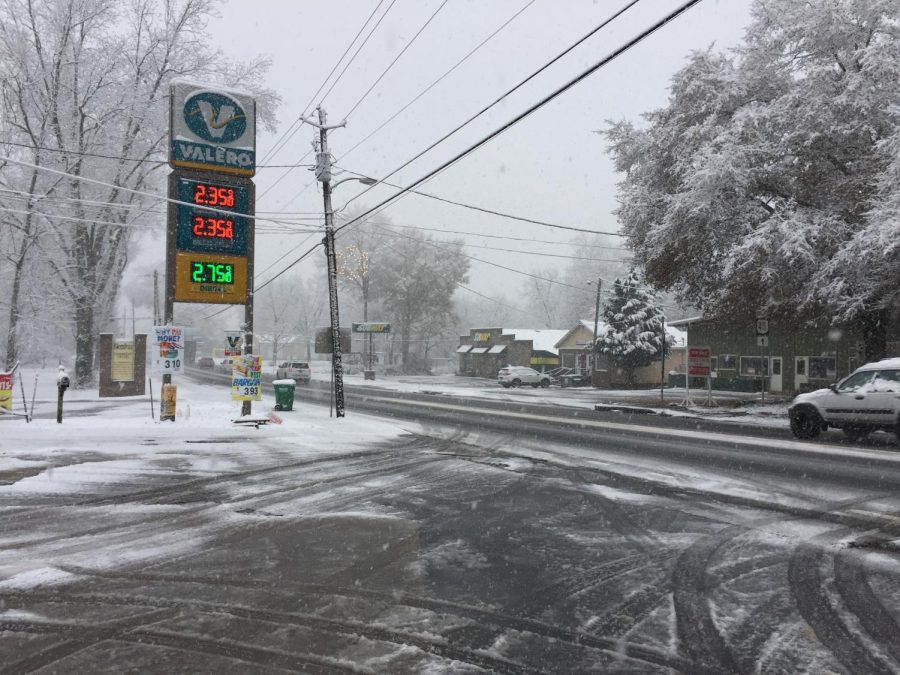Global Warming Takes The World by Storm
Courtesy of Thomson200. Many strange weather changes have occurred with global warming, like the sudden snowfall in Florida.
The fourteen inches of snow that fell in Boston on Thursday, November 30, created what weather officials call a “historic high tide” that left thousands without power. The winter storm would soon continue up north, sending the East Coast into a period of frigid winter. Schools and offices were forced to shut down, roads were left impassable, and close to 5,000 flights were grounded.
New England officials warned the public about winds that topped forty miles per hour at Boston’s airport and reached as high as seventy-six miles per hour in Nantucket. These powerful gusts have been demolishing power lines and leaving houses devoid of heat and power.
After the storm, civilians immediately saw a return of freezing temperatures, according to the Washington Post, causing what became known as a “bomb cyclone,” a term used to describe what happens when a storm’s pressure rapidly decreases, releasing large gusts of polar winds. While forecasters say the storm was among the most powerful on the East Coast, much of the cyclone circulated in the Atlantic Ocean.
Unsurprisingly, school systems from Florida to Massachusetts closed due to the low temperatures. Government offices were forced to shut down or pardon employee tardiness, as noted by the Washington Post.
Currently, at least three deaths have been connected to the storm within the first few weeks because of icy roads. North Carolina Governor Roy Cooper announced that three men died due to trucks that upended on the road. State troopers addressed more than 1,000 calls since the storm began, with more than 700 of them involving car collisions. At a news briefing, Cooper relayed that “You can make the job of our first responders and our road crews a lot easier by staying off the roads unless it is absolutely necessary.”
Probably the most unusual state to be hit by the snow is Florida, a usually sunny and fair weathered region. Tallahassee has not seen such a massive amount of snowfall since 1989, according to CNN meteorologist Michael Guy. The severe conditions led to the brief closing of Orlando water parks and two universities. Furthermore, authorities were urged to open dozens of emergency shelters.
The snowstorms are another result of global warming. With a warmer climate, there is a significant increase in ocean evaporation as well as the amount of water vapor the atmosphere is able to retain. These high levels of water vapor are able to create conditions favorable for heavier precipitation in the forms of extreme rain and snow storms.
While states such as Georgia and Florida were hit with heavy snowfall, the cold conditions were able to reach Texas and Louisiana. In one week, at least twelve people had died from cold-related deaths. Six deaths were reported from Wisconsin, Texas, and North Dakota altogether. Of the Texas deaths, two were homeless people who were exposed to the extreme temperatures.
First responders have been forced to overcome difficult conditions when heading out to perform routine duties. About thirty-five miles south of Boston, fire officials in Duxbury, Massachusetts stated that a firefighter was transported to the hospital due to his truck crashing while reporting to a building fire.
Fire officials also described having to perform “several water rescues” after the storm caused historically high tides that flooded over coastlines in Massachusetts, New Hampshire, and Maine. Flooded streets and high tide in Boston caused some vessels to be brought up to street level alongside the city’s Seaport area.
Severe weather changes have become the norm recently, but developing strategies and solutions to environmental issues can better combat more storms that could arrive in the future.






